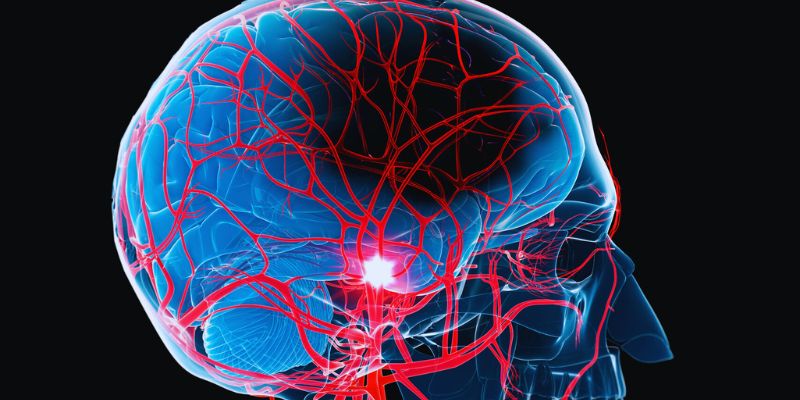Understanding Stroke: A Guide to the Most Significant Causes and Risk Factors
A stroke is a medical emergency that affects millions of people globally. It occurs when disturbed blood flow to the brain kills brain cells. Strokes can cause extreme impairments or death without quick treatment. Several elements influencing stroke risk are genes, medical disorders, and lifestyle decisions. Recognition of these elements benefits early intervention and prevention. This article looks at the main causes of stroke and ways to lower risks.
Knowing the risk factors and causes of stroke will help one avoid potentially fatal circumstances. Making wise judgments will help people be in better health. Understanding the warning signals also facilitates the timely medical assistance search. Keep educated on typical stroke causes and strategies to reduce them.

High Blood Pressure: A Cause of Stroke
The most common cause of stroke is high blood pressure, sometimes known as hypertension. It strains blood vessel walls excessively and weakens them gradually. Because vascular rupture or obstruction, this raises a stroke risk. Unchecked hypertension can cause hemorrhagic as well as ischemic strokes. Even modestly raised blood pressure raises a stroke risk. Early identification and management benefit from consistent monitoring.
Control of hypertension depends much on lifestyle changes. Low-sodium foods in a good diet help to lower blood pressure. Furthermore, enhancing circulation and strengthening the heart is exercise. Meditating, among other stress-reducing strategies, naturally lowers blood pressure. Further lowering stroke risk are giving up smoking. Severe cases could call for medication. For the optimal treatment strategy, always heed advice from a doctor. Reducing strokes requires control of high blood pressure.
Diabetes and Its Impact on Stroke Risk
High blood sugar levels from diabetes greatly raise stroke risk. It compromises blood vessels, thereby increasing their blockability risk. Reduced blood circulation to the brain can follow from this. People with diabetes also have more chance of obesity and high blood pressure development. Both disorders increase stroke risk. Reducing the risk of a stroke depends on good control of diabetes.
A balanced diet, including limited sugar consumption, better regulates blood glucose levels. Frequent exercise enhances circulation and raises insulin sensitivity. For certain people, insulin or medications could be required. Regular health visits enable one to monitor diabetes-related problems. Moreover, stroke prevention must be under control of cholesterol levels. Under control, diabetes reduces the risk of major medical issues.
Smoking and Its Dangerous Effect on the Brain
Stroke is mostly caused by smoking. It causes blood vessels to break and stimulates clot development. While carbon monoxide lowers oxygen flow to the brain, nicotine increases blood pressure. This mix greatly increases the stroke risk. Complications connected to strokes can even arise from secondhand smoke. Two times as likely as non-smoking people are smokers to experience a stroke.
Giving up smoking improves both immediate and long-term health. Weeks pass, blood pressure steadies, and circulation gets better. Stroke risk falls dramatically with time. Medications and support groups help to overcome nicotine addiction. Changing smoking for better practices like exercise helps one to quit more easily. Protecting brain health mostly depends on avoiding smoking completely. Prevention of stroke depends on an awareness of the risks of smoke.

Heart Disease and Its Link to Stroke
Especially in those with atrial fibrillation, heart illness raises a stroke risk. Blood clots brought on by irregular heartbeats move to the brain. An ischemic stroke follows from this. Additional heart diseases, including heart failure and blocked arteries, can increase stroke risk. Reducing the risk of strokes requires keeping heart health intact.
Frequent heart tests find early on possible issues. A diet that is beneficial for the heart and has good fats and fiber enhances heart function. Reducing cholesterol stops arterial blockages. Physical exercise increases circulation and helps the heart to be stronger. Reducing processed meals and too much sodium helps cardiac function. Severe diseases could call for medical treatments ranging from medications to surgery. A good heart reduces stroke risk and guarantees improved brain function.
Unhealthy Diet and Its Role in Stroke Development
A bad diet raises blood pressure and cholesterol, therefore contributing to stroke risk. Eating processed food heavy in sodium increases blood pressure. Unchecked saturated fats cause artery plaque to develop, reducing blood flow and raising the risk of stroke. A diet devoid of key nutrients also compromises blood vessels.
A good diet abounds in fresh fruits, vegetables, and whole grains. Healthy fats and lean proteins help support cardiovascular function. Lowering sugar intake is crucial for maintaining steady blood sugar levels. Maintaining hydration enhances general brain capacity and circulation. Meal planning facilitates improved eating choices. A wholesome diet lowers stroke risk and advances long-term health.
Obesity and Lack of Physical Activity
Inactivity and obesity add to several elements of stroke risk. Too much weight raises diabetes risk, blood pressure, and cholesterol. Arterial fat buildup limits brain blood flow. Moreover, obesity strains the heart especially heavily. That raises the risk of cardiovascular illnesses development. Prevention of strokes depends on keeping a good weight.
Frequent exercise tones the heart and increases circulation. Combining strength training with cardio maximizes results. Simple pursuits like cycling or walking improve general fitness. Mindful eating and portion control help prevent too-rapid weight increases. Changing inactive behaviors allows one to keep an active lifestyle. Little adjustments in regular activities enhance stroke prevention.
Conclusion:
Knowing the causes and risk factors of stroke helps one to prevent it. Control of diabetes, heart disease, high blood pressure, and other conditions lowers the stroke risk. Moreover, improving brain function means quitting smoking and maintaining a good diet. Regular physical exercise and weight control greatly reduce stroke risk. Long-term stroke prevention depends much on lifestyle changes. Early warning symptoms enable one to seek quick medical attention. Better preventative plans are made possible by knowing typical stroke triggers. Making wise medical selections lowers the possibility of major side effects. Giving whole well-being priority guarantees a longer and better life. By acting now, one can prevent future events that are fatal.












